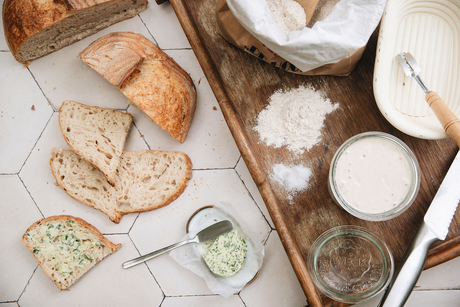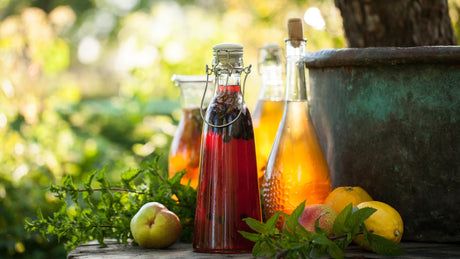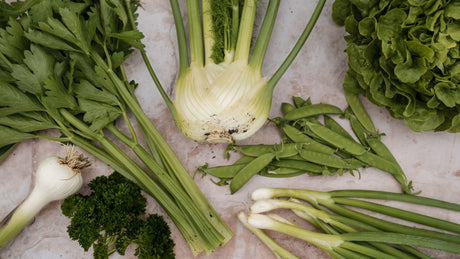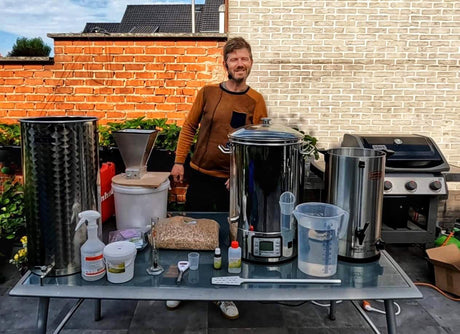ladybugs in the vegetable garden
Red with white dots, black with yellow dots, black with red dots, many dots, few dots, ... They all have one thing in common.
Ladybirds are useful insects in the vegetable garden. They eat about 5000 lice or mites during their life (which usually lasts 1 year).
Ladybirds have many names, even different per region. Where I come from (West Flanders) we call them Hemelbeestjes, no idea why. Write below this article what they are called in your region, that is always fun to read.
In addition to whitefly, aphids, spider mites and many other soft insects, 'sky bugs' also eat nectar and pollen. So make sure to provide plants in your garden that provide pollen and nectar to your
ladybugs . Coriander,
dill , fennel, oregano, thyme,
yarrow , the large nettle, alfalfa, middle evening primrose, carrot, common
comfrey and barn candle.
Ladybirds are 5 to 10 mm in size. They have a round body and usually have black dots on a bright red body. The number of dots varies according to the species. The head and legs are black. The larvae of the Ladybird look like mini
crocodiles . They are black with red areas and are about 5 mm in size. The larvae can eat up to 40 aphids per hour (see main photo of this article)!

The larva of a Ladybug
The cycle from egg to larva to adult insect takes about 5 to 7 weeks. There are many generations
of ladybirds per year depending on the species. Do not tidy up your vegetable garden too neatly in the winter because
ladybirds hibernate in old branches or trunks and garden waste.

The Ladybug protects itself
Did you know: Have you ever tried to catch a ladybug? Then you've probably had orange juice on your hands. I used to be afraid that I was making the bug bleed. Nothing could be further from the truth. The orange juice is called hemolymph and is poisonous, it stinks and seeps from the knee joint. Predators that target the ladybug are deterred by the repulsive hemolymph. The larvae can secrete this substance through their intestines. From now on, I won't think: 'Help, the bug is bleeding to death', but 'It's protecting itself from me while that is completely unnecessary.' Why would I want to harm it.
Finally, some tips on how to get these pest eaters into your garden.
- Very simple. Order them on this site, via this link Ladybird larvae you can order them per 50 or 100. These larvae get to work immediately and lay the foundation for a colony in your garden for years. The tips below will help you maintain them.
- When planting your ornamental garden, choose native plant species of which you leave the dried plant parts or seed pods in the winter. This offers a nice place for ladybirds to hibernate.
- Your garden can be a bit of a wild garden. A perfectly clean garden where the grass is mowed short, not a single weed is visible, the plants are pruned short again immediately after flowering, is not a pleasant place for ladybirds to stay. They will not come here of their own accord!
- The first aphids you see, you do not spray to death! Aphids are needed in the garden to attract ladybirds . So you have to be able to tolerate aphids. The trick is to have ladybirds in your garden before the aphids appear. This happens gradually, we then speak of a garden in balance. You only achieve this by tolerating aphids in the first transition years and certainly not correcting them chemically.
- Depending on the size of your garden, sow a small or large plot of land as a wildflower meadow. Certain flowers attract ladybirds . You can take this into account when sowing a flower plot.
- Flowers provide pollen and nectar, which gives ladybirds an alternative food source in case of food shortages, i.e. when there are no aphids or spider mites in your garden. Hence the importance of ensuring that you have flowering plants from early spring to late autumn when laying out your garden. This way, there is always food for ladybirds , but also for many other useful insects.
- Place a ladybug house in your garden. This is fun to look at, especially children love this. And ladybugs can come and live in it. Put some straw or dried leaves in the house and done! However, ladybugs will only come to live in a ladybug house if the conditions discussed above are also met!
 Different types of ladybugs
Different types of ladybugs
 ladybugs eat pollen and nectar
ladybugs eat pollen and nectar The larva of a Ladybug
The larva of a Ladybug The Ladybug protects itself
The Ladybug protects itself ladybirds Adalia 100 larvae
ladybirds Adalia 100 larvae






